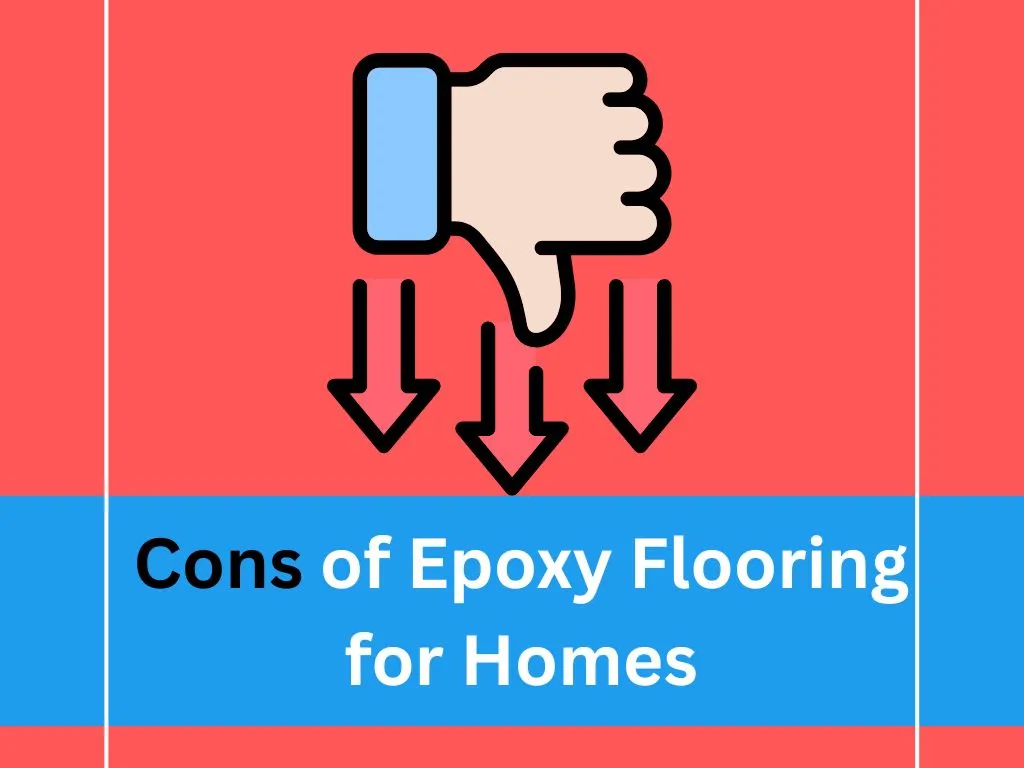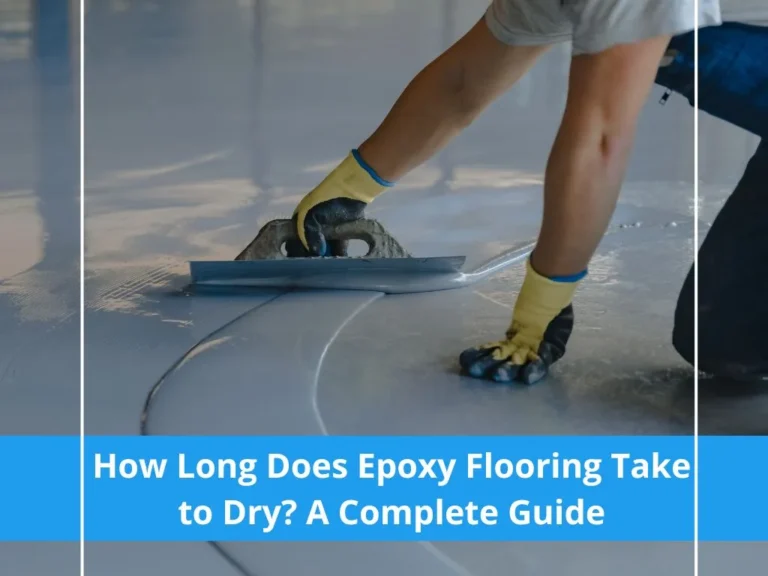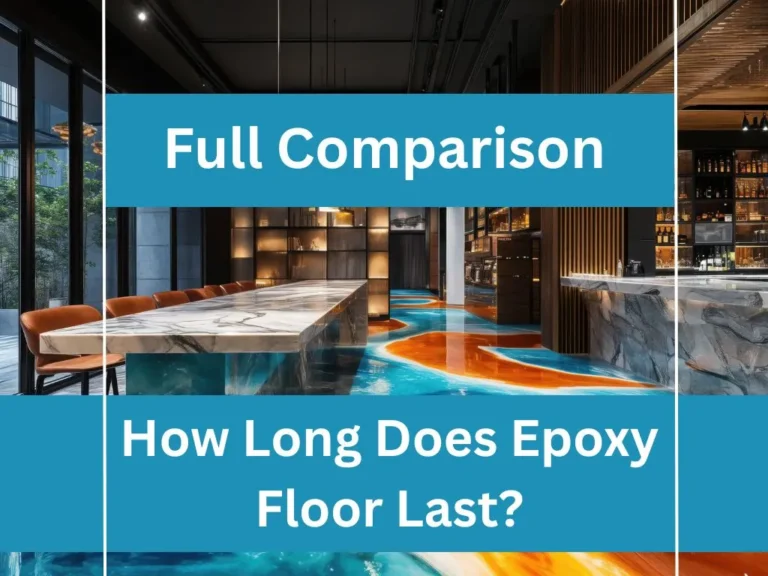Is Epoxy Flooring Good for Homes? A Comprehensive Guide
Yes, epoxy flooring is a great choice for homes, especially in areas like kitchen, garages floors, patios, basements, and utility rooms. It boasts remarkable durability, lasting over 20 years in residential settings. Additionally, epoxy flooring is highly resistant to cracking, peeling, oils, corrosion, heat, and water damage. However, to gain the best outcomes, proper installation is essential.
Our personal comprehensive guide helps you to decide, is epoxy flooring good for homes? We covered everything from pros and cons to cost and comparisons with alternatives, ensuring you have all the information for an informed decision.

At-a-Glance: Epoxy Flooring for Homes
|
Aspect |
Details |
|---|---|
|
Durability |
Can last 10 to 20 years or more with proper installation and care |
|
Cost |
$4 to $15 per square foot installed on average |
|
Maintenance |
Easy cleaning, stain-resistant |
|
Installation |
Professional recommended for best results |
|
Comfort |
Hard surface, not ideal for living areas |
|
Aesthetics |
Highly customizable colors and finishes |
Summary of Pros and Cons of Epoxy Flooring for Homes
|
Aspect |
Pros |
Cons |
|---|---|---|
|
Durability |
Exceptional resistance to wear, impacts, and heavy traffic. |
Can chip or peel if not properly installed or if exposed to extreme conditions. |
|
Resistance |
Highly resistant to chemicals, stains, water, and oils. |
Susceptible to UV yellowing in sun-exposed areas. |
|
Maintenance |
Easy to clean with seamless surface. |
Slippery when wet unless additives are used. |
|
Aesthetics |
Highly customizable with colors, patterns, and finishes. |
Hard and uncomfortable underfoot for prolonged standing. |
|
Installation |
Cost-effective long-term. |
Complex process with odors and fumes during application. |
|
Cost |
Affordable materials and low upkeep. |
Higher upfront costs for professional work. |
Pros of Epoxy Flooring for Homes

1. Exceptional Durability and Longevity
Epoxy flooring offers exceptional longevity (20+ years in residential settings), making it one of the most durable residential flooring options available. Unlike traditional concrete or tile, which can crack and deteriorate, epoxy creates a seamless, resilient surface that withstands daily wear and tear.
Why It Matters for Homeowners:
- Resists impact from dropped tools and heavy objects
- Withstands vehicle traffic in garages without damage
- Maintains appearance despite high foot traffic
- Reduces long-term replacement costs
Real-World Performance: In Austin’s challenging climate with extreme heat and humidity fluctuations, properly installed epoxy floors have demonstrated consistent performance for over two decades. The thermosetting polymer structure creates molecular bonds that resist thermal expansion and contraction.
2. Superior Chemical and Stain Resistance
Epoxy’s non-porous surface provides exceptional protection against common household chemicals, oils, and stains. This makes it particularly valuable in spaces prone to spills and exposure.
Resistant To:
- Motor oil and automotive fluids
- Household cleaning chemicals
- Paint and solvents
- Pet urine and accidents
- Food and beverage spills
- Salt and de-icing agents
Austin Climate Advantage: Texas homeowners benefit from epoxy’s resistance to humidity-related issues like mold and mildew growth, which are common concerns in the region’s subtropical climate.
3. Effortless Cleaning and Maintenance
One of epoxy flooring’s most appreciated features is its remarkably easy maintenance routine. The seamless, non-porous surface inhibits the buildup of dirt and stops the growth of bacteria.
Daily Maintenance:
- Regular sweeping or dust mopping
- Occasional damp mopping with mild cleaner
- No waxing or special treatments required
Time Savings: Homeowners report spending 70% less time on floor maintenance compared to traditional concrete or tile surfaces.
4. Unlimited Design Customization
Modern epoxy systems offer virtually limitless aesthetic possibilities, allowing homeowners to create unique, personalized spaces.
Popular Design Options:
- Solid Colors: Classic grays, tans, blues, or custom-matched hues
- Metallic Finishes: Pearlescent, swirled patterns mimicking marble or granite
- Decorative Flakes: Color chips in various sizes and combinations
- 3D Effects: Depth-creating designs for visual interest
- Custom Logos: Personal branding or decorative elements
Trending in Austin: Earthy tones with subtle metallic accents have become increasingly popular, complementing the region’s Hill Country aesthetic while providing modern functionality.
5. Cost-Effectiveness and Value Addition
While initial installation requires investment, epoxy flooring delivers exceptional long-term value through durability and low maintenance costs.
Property Value Impact: In some markets, agents report a potential bump of up to $8 per square foot when homes feature professional epoxy flooring in garages and basements.
Long-Term Savings:
- No replacement costs for 20+ years
- Minimal maintenance expenses
- Reduced cleaning product usage
- Lower utility costs (reflective surfaces improve lighting efficiency)
6. Safety Features
When properly installed with anti-slip additives, epoxy flooring can actually enhance home safety.
Safety Benefits:
- Slip-resistant additives available
- High visibility from the reflective surface
- Seamless surface eliminates trip hazards
- Fire-resistant properties
- Chemical spill containment
Cons of Epoxy Flooring for Homes

1. Complex Installation Requirements
Professional installation is highly recommended because epoxy application demands precise conditions and expertise.
Installation Challenges:
- Requires extensive surface preparation
- Concrete must be properly cured (28+ days for new concrete)
- Temperature and humidity must be controlled
- Multi-day process with specific timing requirements
- Mistakes are difficult and expensive to correct
Austin-Specific Considerations: The region’s high humidity (averaging 66%) and temperature fluctuations require experienced installers who understand climate adaptation techniques. Summer installations demand careful timing to avoid moisture interference.
DIY Reality Check: While DIY kits exist, professional installation success rates exceed 95%, compared to 60-70% for inexperienced DIY attempts. Failed installations require complete removal and reinstallation, often costing more than hiring professionals initially.
2. Installation Odors and Fumes
Epoxy flooring has unpleasant odours during application and curing, which can be problematic for occupied homes.
What to Expect:
- Strong chemical smell during application
- Fumes persist for 24-48 hours
- Requires excellent ventilation
- May trigger sensitivities in some individuals
- Pets and children should be kept away during curing
Mitigation Strategies:
- Schedule installation when the family can temporarily relocate
- Use commercial-grade ventilation equipment
- Choose low-VOC epoxy formulations when available
- Allow extended cure time before reoccupying the space
3. Slippery When Wet
Epoxy flooring has a potential slipping hazard when wet or oily, which requires addressing through proper finishing techniques.
Risk Factors:
- Smooth epoxy can be slick when moisture is present
- Oil spills create especially hazardous conditions
- High-gloss finishes increase slip risk
- Wet shoe treads reduce traction
Solutions:
- Anti-slip additives mixed into the topcoat
- Textured finishes for high-risk areas
- Strategic use of floor mats in entry zones
- Prompt cleanup of spills
4. UV Discoloration Susceptibility
Epoxy exposed to direct sunlight can yellow over time, particularly in spaces with large windows or outdoor applications.
Yellowing Factors:
- UV radiation breaks down epoxy polymers
- More pronounced in light-colored epoxies
- Garage door areas are particularly vulnerable
- Inconsistent fading creates a patchy appearance
Prevention Methods:
- UV-resistant topcoat application
- Window treatments to reduce direct sun exposure
- Regular resealing every 3-5 years
- Choosing darker colors less prone to visible yellowing
5. Hardness and Temperature
Epoxy’s solid surface lacks the cushioning of other flooring materials, which affects comfort.
Comfort Considerations:
- Hard surface tiring for prolonged standing
- Cold to the touch in the winter months
- Items that are dropped are more likely to break.
- Not ideal for living spaces where comfort is a priority
When This Matters:
- Home gyms may benefit from cushioned mats
- Workshops where standing for hours is common
- Basements used as playrooms
- Areas where elderly family members spend time
6. Moisture Sensitivity During Installation
Concrete moisture content can cause serious installation failures if not properly managed.
Moisture-Related Issues:
- Bubbling and delamination from trapped moisture
- Adhesion failure leading to peeling
- Costly removal and reinstallation required
- Before applying epoxy, make sure to repair any cracks, chips, or damage in your concrete floor.
Testing Requirements: Austin’s clay soil retains moisture longer than other regions, making professional moisture testing essential before any epoxy installation.
Real-World Experiences: What Homeowners Say
Here’s what some homeowners (our customers) have shared about their epoxy flooring:
Comprehensive Cost Analysis: What You’ll Really Pay
Understanding the complete cost picture helps homeowners make informed decisions and budget appropriately.
Professional Installation Costs (2025 Data)
Most homeowners pay between $0.50 and $3 per square foot for materials, with epoxy flooring costing $4 to $15 per square foot installed on average.
|
Application Type |
Cost Range (Materials) |
Total Installed Cost |
Typical Space |
|---|---|---|---|
|
Basic Solid Color |
$0.50-$1.50/sq ft |
$4-$6/sq ft |
400 sq ft garage: $1,600-$2,400 |
|
Decorative Flake |
$1.50-$2.50/sq ft |
$6-$8/sq ft |
400 sq ft garage: $2,400-$3,200 |
|
Metallic Epoxy |
$2.50-$3.50/sq ft |
$8-$12/sq ft |
400 sq ft garage: $3,200-$4,800 |
|
Commercial Grade |
$3.00-$4.00/sq ft |
$10-$15/sq ft |
1,000 sq ft warehouse: $10,000-$15,000 |
Cost Factors That Affect Your Project
Surface Preparation Requirements: Before applying epoxy, repair any cracks, chips, or damage in your concrete floor. Basic concrete patching can cost between $25 and $250, but keep in mind that such issues might indicate a deeper structural problem.
Additional Cost Variables:
- Concrete condition: Poor surfaces add $1-$3/sq ft for repairs
- Moisture mitigation: Vapor barriers add $2-$4/sq ft in problematic areas
- Surface grinding: Proper preparation adds $0.50-$1.50/sq ft
- Custom colors: Specialty pigments add $0.25-$1/sq ft
- Decorative elements: Logos, patterns, borders add $100-$500+
- Furniture moving: Professional moving services $150-$400
Austin-Specific Cost Considerations: Local labor rates and material costs tend toward the higher end of national averages due to strong construction demand. However, increased competition among epoxy contractors has stabilized pricing in recent years.
Note: Professional installation costs approximately $1,000 to $2,000 more initially but delivers 2-3x longer lifespan and eliminates failure risk. Over 20 years, professional installation actually costs less per year of service.
How Epoxy Stacks Up Against Alternatives
To round out your decision, compare epoxy to common home flooring rivals:
Epoxy vs. Polished Concrete
Epoxy wins on customization and resistance, boosting light reflection up to 300% for brighter rooms. Polished concrete is cheaper (often half the cost) and eco-friendly, but less versatile and only reflects up to 100%. For more, see our polished concrete guide.
Epoxy vs. Tile
Epoxy’s seamless nature means no grout hassles and better impact resistance, often cheaper over time. Tile offers warmer comfort and classic looks but demands more upkeep and can crack under stress.
Epoxy edges out for modern, low-fuss homes, but preferences vary.
Conclusion: Is Epoxy Flooring Right for Your Homes?
Epoxy flooring offers durability, ease of cleaning, and customization at an affordable price. It’s particularly great for garages, basements, and kitchens. However, it has drawbacks, such as installation complexity and potential slipperiness. By carefully weighing the pros, cons, and costs, you can determine whether epoxy flooring is the right choice for your home.




One Comment